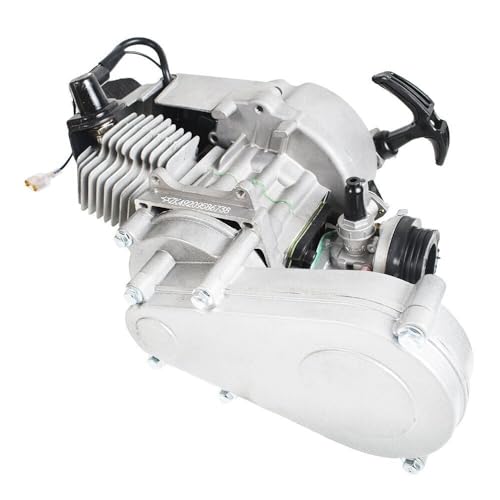Once upon a time...
The flowbench is a machine that measures the airflow through the ports by sucking air thru like a vacuum cleaner. The vacuum gauges on the bench actually measure the resistance to the flow thru the ports, and the result is converted into CFM. That means "how many Cubic Feet of air will flow through the port per Minute."
Anyone who buys a flowbench and a dremel tool is "qualified" to flowbench - port heads. The Superflow flowbench owner's manual says that:
" For every 1 CFM of increase in intake flow,
you'll gain .43 horsepower. "
If you want more water to flow through a pipe, just make the pipe bigger.
There's something wrong with this though.
--------------------------------------------------------------------------------
It's easy to understand why so many people automatically think Flowbench - Porting, or "more is better" is a way to improve power.
,
Without closer examination,
it seems quite logical.
Okay, Let's examine it a little closer !!
We were all taught to think of a 4 stroke engine by the traditional textbook explanation of Intake, Compression, Power & Exhaust.
Textbooks and magazines achieve a sort of instant credibility that comes from the association with $$.
Example:
"This source must be right ... after all, there's obviously
some big money behind it ..."
Because of this association, the vast majority of people never question the things they learn in school, or read in mainstream publications.
In the last issue of Power News you learned to think of a four stroke engine in a whole new way... 8 Phases !!
In the 8 phase engine article,
you'll remember that the intake "stroke"
actually consists of 3 phases.
( Overlap, Suction and Charging. )
Uh - Oh ...
It turns out that a flowbench measures the least
important aspect of intake cycle efficiency !!
Stock Yamaha R1 Intake Port
It's true !!
When you stop to think about it, a
flowbench only measures the efficiency
of the "suction phase".
That's not the right
thing to measure.
Why ??
Because, it doesn't matter how well
the cylinder is filled at that point in
the intake cycle !
What ... that sounds crazy !!!
It's 100% true ... it's simply a matter of the sequence of events ! The success of the last event, the charging phase, determines the success of the entire intake process.
What happens when a low velocity port fills the cylinder really well, but too early ?? The result is a slower intake charge that stops flowing into the cylinder. Then some of the charge gets pushed back out of the cylinder and into the port as the piston returns up the bore during the intake charging phase. The gain in flow doesn't offset the loss in port velocity






![JOYROOM Bike Phone Holder Mount, [Anti Vibration] Bicycle Phone Mount, Dirt Bike Accessories for All 4.7-7.0" Phones, Motorcycle Phone Mount for iPhone 16 Pro Max/15/14/13/12 Samsung S25 Ultra/S24/S23](https://m.media-amazon.com/images/I/41MPtPvknUL._SL500_.jpg)





![LISEN Bike Phone Holder, [2025 Upgrade] Motorcycle Phone Mount, Bicycle Phone Holder, Handlebar Phone Mount, Dirt Bike Accessories, Bicycle Accessories, for iPhone Samsung Google Pixel, Black](https://m.media-amazon.com/images/I/41FJGrZQ5ML._SL500_.jpg)







![Zewdov Motorcycle Phone Mount, Upgrade Bike Phone Mount [1s Lock][Secure Protection], 360° Rotatable Phone Holder for Mountain Bike/ATV/Scooter Handlebar, Compatible with iPhone/Samsung 4.7-6.7"](https://m.media-amazon.com/images/I/51lvX8e2C3L._SL500_.jpg)
















![Lamicall Motorcycle Phone Mount Holder - [Dual Vibration Dampener] [Upgrade Handlebar Clip] Motorcycle Cell Phone Holder, Bike Phone Mount, Fit iPhone 16/15/14/13 Pro Max, 4.7-6.7" Phones, Black](https://m.media-amazon.com/images/I/41bnoU+bpuL._SL500_.jpg)





